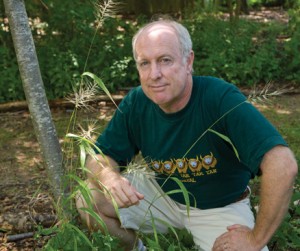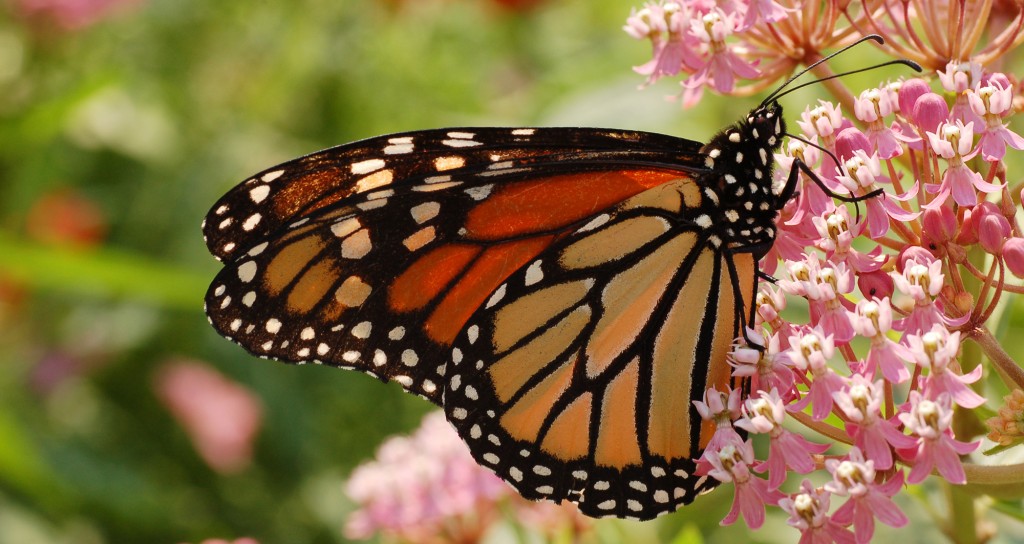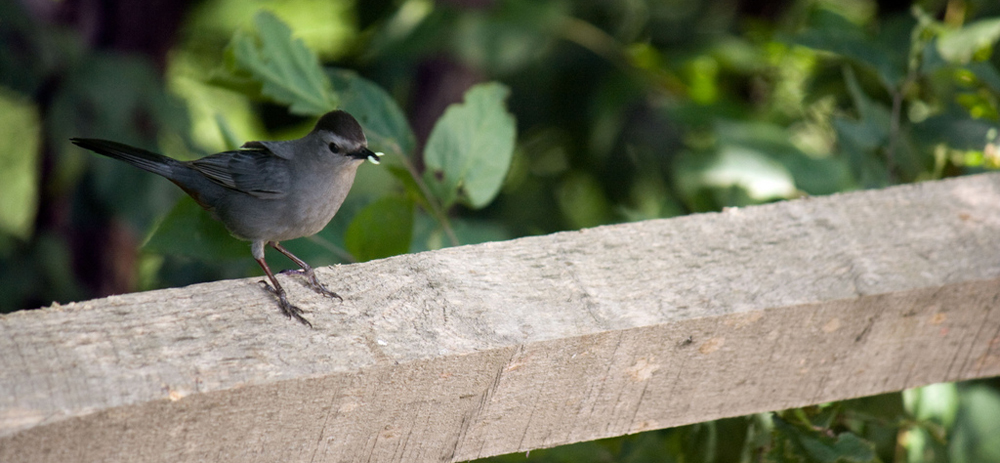Doug Tallamy – Nature’s Boy Scout
Posted in Adult Education, Learning Experiences, Programs and Events on March 13 2012, by Sonia Uyterhoeven
Sonia Uyterhoeven is the NYBG‘s Gardener for Public Education.

Doug Tallamy’s lecture started from a basic and logical premise: if you take away the places for wildlife to live and feed, you will lose your wildlife. We are all aware that habitat destruction leads to a loss of species, but very few of us believe that we can make a difference or that we are directly linked to the process. I mean this in a non-judgmental way and from a place of empowerment.
Some of you may think that this is an early case of ‘election fever,’ but alas it is not. Last month I sat in an auditorium and listened to a very convincing and lucid proponent for environmental restoration and species diversity. Regardless of his own political views, with respect to the biome Tallamy is definitely not a democrat. “All plants,” he asserts, “are not created equal in their ability to support wildlife.”
It is not an Orwellian claim of privilege but rather the result of continuous and careful research that shows how native plants are vastly better at supporting wildlife than exotics. Even amongst the natives there is no equality–oaks (Quercus) support 534 different forms of wildlife while Canadian redbuds (Cercis) support only 19.
For years, Tallamy has researched the interaction or, to be more precise, the interdependency of plants and insects. Plants have co-evolved with insects, so it makes sense that your local bugs would prefer your native flora. Plants have different defense systems to protect themselves from herbivores–whether we are thinking of insects or animals. Plants have not only developed physical defense systems to ward off attack, such as thorns, but also chemical defense systems.
No two species have the same leaf chemistry. Plants produce compounds in their leaves that influence taste, digestibility, and toxicity levels. Some of the common compounds that you have probably already heard of are nicotine, tannins, and cyanide. Insects have adapted to this situation. Some insects produce enzymes in their gut that help them break down the compounds and digest the plant.
The classic example is the relationship between milkweed (Asclepias) and the monarch butterfly (Danaus plexippus). Milkweed has a milky sap that is a deterrent to most herbivores. The monarch butterfly, on the other hand, has co-evolved so that it lays its eggs on the milkweed. When the eggs hatch, the larvae feed on the milkweed.

Many species of caterpillars have colors that help camouflage them, making them less of a target for hungry birds. The monarch caterpillar, on the other hand, has colorful striped markings. They are advertising that they have been feeding on the unpleasant-tasting milkweed. Their vivid coloring acts as a warning sign to birds.
This system of interdependency sets up a balanced ecosystem. If only certain insects feed on certain plants then the plants will not be decimated by a wide variety of predators. When you introduce exotic species into your garden, particularly invasive species, the balance in nature is lost. Exotic species have not co-evolved with the local wildlife and many of them are pest resistant. They do not provide a feeding ground for insects.
Some of you may be asking why you would want to encourage bugs to live in your neighborhood. One good reason is that birds feed on insects and without your creepy crawlies you would have no birds. Tallamy notes that birds would rather eat an insect (protein) than berries (sugars). Who knew that birds were such committed carnivores? He has charted a 1:1 correlation between the extinction of insects and birds, meaning that if we lose 40% of our insect population through urbanization and habitat loss, we will lose 40% of our bird population as well.

So where does the empowerment come in? How are we involved in this process? It is fairly simple. Tallamy suggests we start viewing our gardens–as small as they might be–as the ‘new nature.’ Are we dumping pesticides and herbicides into our gardens that will not only decimate wildlife but also pollute our water supply, and adversely affect our health and our children? Do we allot a large area to our lawn (an unhealthy, sterile monoculture) or do we provide natural areas that encourage wildlife?
When creating the garden aesthetic, are we interested in including plants that will encourage wildlife? Are we planting them in the quantities that will sustain a healthy ecosystem? Are we providing birds, butterflies, bees and a whole host of crawling critters with the food and shelter that they need?
If we are to maintain a healthy ecological balance, we need to create corridors for wildlife to travel through. Isolated habitats are not the answer. If we have torn down natural habitats through urbanization, then we need to build them back up in our gardens.
In the words of Tallamy, the reasons for ‘bringing nature home’ are manifold. Carbon sequestration is just one reason that this has received much-needed media attention. The importance of biodiversity in a balanced ecosystem is another. A diverse environment is a more resilient environment that is less susceptible to pests and disease. When we do away with the natural system of checks and balances, we open ourselves up to population explosions with respect to both insects and plants. Invasive species are a multimillion-dollar problem in the US.
If you are in the mood for another provocative and inspiring presentation, join us for our final Winter Lecture Series presentation this Thursday, March 15 from 10 a.m. to 12 p.m. Thomas Christopher will be giving a talk entitled ‘The Backyard Revolution.’ Christopher will be discussing water-efficient gardens, covering topics from water harvesting to rain water gardens.

